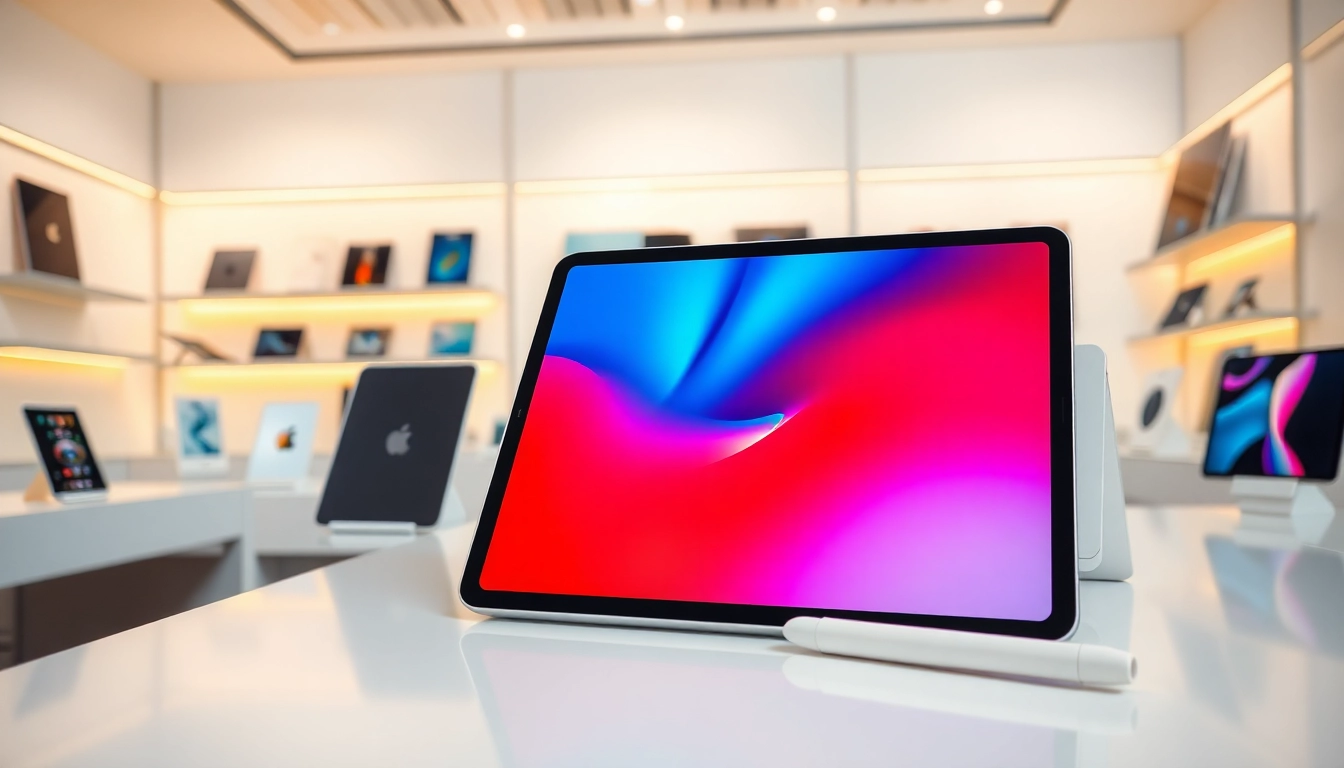Understanding the iPad Models
Overview of iPad Variants
The iPad lineup from Apple features a range of variants designed to cater to different users’ needs. The primary models are the iPad, iPad Air, iPad mini, and iPad Pro. Each model varies significantly in terms of specifications, design, and intended use, appealing to casual users, students, professionals, and creatives alike.
Differences Between iPad Pro, Air, and Mini
While the standard iPad is a great entry-level device, aimed at casual use like streaming videos or browsing social media, the iPad Pro is the powerhouse of the line. It offers features like the Apple M1 chip, larger displays (up to 12.9 inches), and advanced display technologies such as ProMotion and Liquid Retina XDR for superior color accuracy and refresh rates. The iPad Air strikes a balance between affordability and performance, featuring the M1 chip while being somewhat lighter and thinner than the Pro variant.
Selecting the Right Model for Specific Use Cases
Choosing the right iPad model depends on your specific use cases. If you need a device primarily for content consumption, the standard iPad is sufficient. However, for heavy multitasking, graphic design, or professional work, the iPad Pro is recommended. The iPad Air is a good middle ground, often favored by students and semi-professional users for its capabilities without the high cost of the Pro. The iPad mini, with its compact size, is ideal for reading and note-taking on the go.
Pricing Strategies When You Buy iPad
Current Market Price Ranges
The price of iPads varies based on the model and specifications. The base iPad typically starts around $329, while the iPad Air can range from $599 to $749 depending on the storage, and the iPad Pro can exceed $1,099. Prices can fluctuate based on seasonal sales and retailer discounts, making it essential for consumers to monitor prices closely.
Where to Find Discounts and Offers
Consumers looking to buy iPad at a discount can explore various options, including Apple’s trade-in program, seasonal sales at major retailers like Best Buy and Amazon, or refurbished options. Websites like Back Market also offer refurbished iPads at significantly reduced prices, providing an environmentally-friendly buying avenue.
Understanding Trade-In Value
Apple’s trade-in program allows users to receive credit towards a new iPad when they trade in their old device. The value varies depending on the model and condition of the iPad being traded. For instance, newer models with minimal wear can fetch significant trade-in discounts, making upgrading more cost-effective. It’s worth getting quotes from multiple outlets, including Best Buy or independent sellers, to ensure the best trade-in value.
Accessories to Enhance Your iPad Experience
Must-Have Accessories for Productivity
Enhancing your iPad experience often involves selecting the right accessories. The Apple Pencil, particularly the second generation for iPad Pro and Air, can be a game changer for note-taking and drawing. For productivity, a compatible keyboard such as the Magic Keyboard can transform your iPad into a laptop-like device, ideal for writing, working on spreadsheets, or other tasks requiring extensive typing.
Best Cases and Screen Protectors
Protecting your iPad is crucial for longevity. There are various cases available, ranging from rugged options to slim designs. Apple’s Smart Folio covers not only protect the tablet but also serve as a stand. Additionally, investing in a quality screen protector can safeguard against scratches and improve the device’s resilience against drops during daily use.
Stylus and Keyboard Options
Aside from the Apple Pencil, various third-party styluses like the Logitech Crayon offer more budget-friendly alternatives without sacrificing functionality. For keyboards, options vary from Apple’s own Magic Keyboard to budget-friendly Bluetooth keyboards that can help enhance typing comfort and efficiency.
Buying Options: Online vs. In-Store
Benefits of Buying iPad Online
Purchasing an iPad online offers several advantages, including a broader selection of models and colors, helpful customer reviews, and often better prices due to online sales. Convenience is also a significant factor; consumers can browse at their own pace, compare prices across different retailers, and have the device shipped directly to their doorstep.
Shopping In-Store: What to Consider
While online shopping is convenient, visiting a store like Best Buy or an Apple Store provides the benefit of hands-on experience. Customers can physically examine the iPad models, assess their weight and size, and even test out accessories. Furthermore, in-store personnel can offer insights and recommendations based on individual needs, which can be invaluable for first-time buyers.
Comparing Retailers for Best Deals
Scouring multiple retailers can lead to discovering the best deals. Retailers like Amazon, Best Buy, and Walmart often have sales that competitors don’t, especially during the holiday season. Always check for coupons and promo codes before completing a purchase to ensure the best price. Online price trackers can also help consumers find optimal buying times.
Setting Up Your New iPad
Initial Setup and Customization
Setting up a new iPad is a straightforward process. Upon powering on the device, users are guided through the initial setup, including language, Wi-Fi connections, and Apple ID integration. After these steps, users can customize their home screen, download preferred apps, and adjust settings to suit their needs, including accessibility features.
Essential Apps to Download
Once setup is complete, downloading essential apps can maximize the iPad’s potential. Useful productivity apps like Microsoft Office, Google Drive, or Evernote are essential for students and professionals. Additionally, creative users might consider downloading Adobe Creative Cloud apps or Procreate for artistic expression. Entertainment apps like Netflix and Spotify enhance leisure time usage.
Maximizing Battery Life and Performance
To ensure your iPad runs optimally, regularly updating the iOS, managing background app refresh, and controlling brightness settings can help. It’s advisable to enable Low Power Mode during intense usage, as this can prolong battery duration significantly. Users should also monitor installed apps and remove those that are seldom used to streamline performance.



